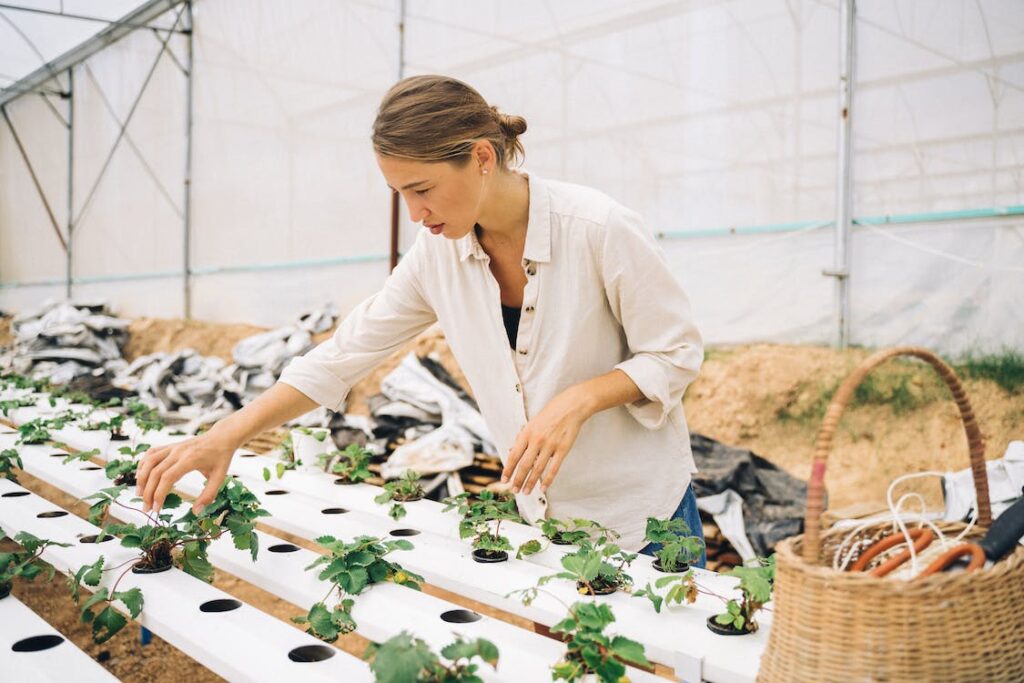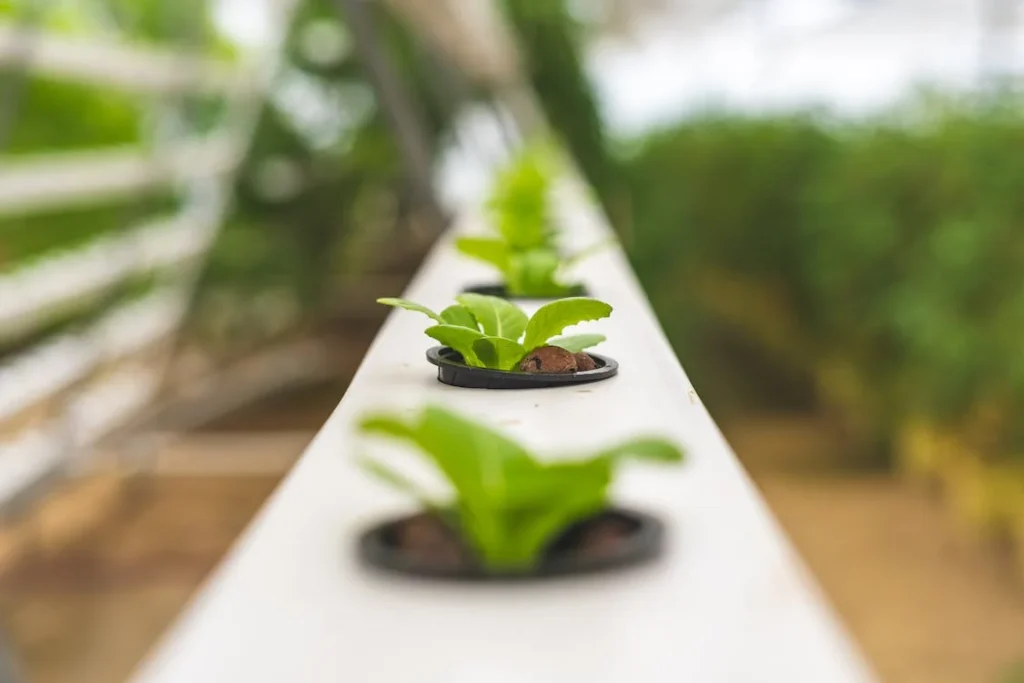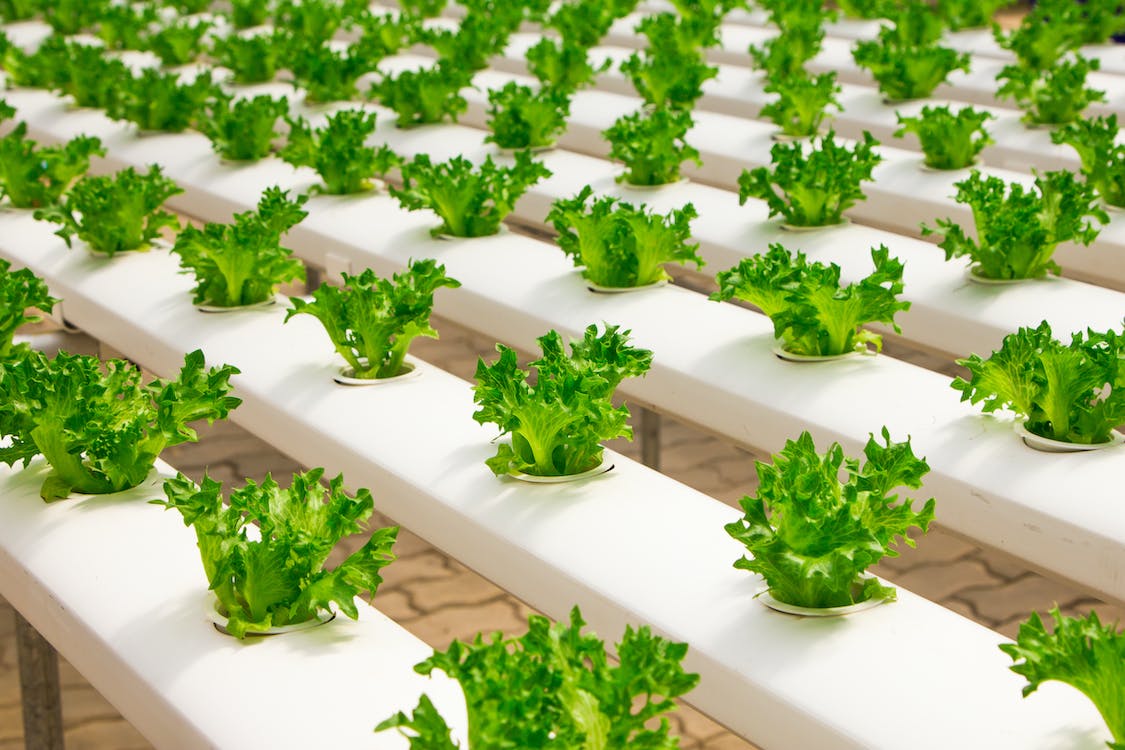Introduction
Curious about hydroponic gardening? Wondering, “How to make a hydroponic garden?” This beginner’s guide simplifies the process, making it accessible for enthusiasts and novices alike. Hydroponics, growing plants without soil, involves using nutrient-rich water solutions. The steps include chosing your hydroponic system—Wick, DWC, NFT, or Aeroponics, gathering essential materials, setting up the system with proper aeration, selecting a suitable growing medium and plants, mixing and balance the nutrient solution, adjusting the pH, planting your seeds or seedlings in the medium, regularly monitoring pH, nutrient levels, and temperature, maintaining cleanliness, and consider joining online communities for advice. Ready to dive into hydroponic gardening? Let’s get started!
What is a Hydroponic Garden?

A hydroponic garden is a soil-less growing method that utilizes nutrient-rich water for plants. Wondering, “How to make a hydroponic garden?” This technique nurtures plants directly with a balanced nutrient solution, promoting efficient growth. In hydroponics, roots are submerged or supported without soil, allowing precise control over the plant’s environment. The absence of soil reduces the risk of pests and diseases, fostering a cleaner and controlled cultivation space. Hydroponic systems come in various types, such as Wick, DWC, NFT, and Aeroponics, each offering unique advantages. These gardens are versatile, making them suitable for various plants, including herbs, greens, and vegetables. Whether you’re a gardening enthusiast or a beginner, exploring hydroponic gardening opens up a world of possibilities for cultivating fresh produce in an innovative and sustainable way.
Hydroponic Gardening VS Traditional Gardening
Hydroponic gardening and traditional gardening differ in their soil use. Let’s see the key differences in the table below.
| Aspect | Hydroponic Gardening | Traditional Gardening |
|---|---|---|
| Growing Medium | No soil involved; nutrient-rich water solutions | Relies on traditional soil for plant growth |
| Nutrient Access | Direct access to nutrients, promoting faster growth | Plants extract nutrients from the soil, potentially slower growth |
| Yield | Generally higher yields due to optimized conditions | Yields may vary based on soil quality and environmental factors |
| Space Requirement | Compact systems, suitable for limited spaces | Requires more space for planting beds or garden plots |
| Disease and Pests | Reduced risk of soil-borne diseases and pests | Susceptible to soil-borne diseases and pests |
| Maintenance | Controlled environment minimizes weeding and tilling | Regular weeding and soil maintenance required |
| Water Efficiency | Often uses less water compared to traditional gardening | Water consumption can be higher, dependent on soil type and climate |
| Environmental Impact | Can be more resource-efficient and sustainable | May involve soil degradation and environmental impact |
| Innovation | Challenges traditional norms, offering a cleaner, controlled approach | Adheres to conventional gardening practices |
Different Hydroponic Systems
Hydroponic gardening offers various systems, each with unique features. Wondering, “How to make a hydroponic garden?” Let’s explore different hydroponic setups suitable for diverse preferences and spaces.
- Wick System:
- Simple and passive, this system uses a wick to transport nutrients to plants.
- Ideal for beginners, it’s low-maintenance and requires minimal setup.
- Deep Water Culture (DWC):
- Plants are suspended in nutrient-rich water with air stones for oxygen.
- Perfect for growing larger plants, it promotes rapid growth and high yields.
- Nutrient Film Technique (NFT):
- In NFT, a thin film of nutrient-rich water flows over plant roots.
- Efficient nutrient delivery and aeration make it suitable for smaller plants.
- Aeroponics:
- Plants are suspended, and nutrient-rich water is misted onto the roots.
- Offers the highest oxygenation, promoting faster growth and increased yields.
Choosing a hydroponic system depends on factors like space, experience level, and plant types. When considering, “How to make a hydroponic garden?” think about the specific needs of your plants and your available resources.
How to Make a Hydroponic Garden: A Step-by-Step Guide

Before diving into the specifics of the process, it’s crucial to understand the step-by-step guide that lays the foundation for your hydroponic success. From selecting the right hydroponic system and gathering essential materials to preparing the growing medium and choosing suitable plants, each step contributes to the overall health and productivity of your hydroponic garden. Additionally, mastering the art of mixing a nutrient-rich solution, adjusting pH levels, and establishing a routine for monitoring and maintenance are key components in ensuring your plants thrive in this soil-less environment. So, let’s unravel the secrets of “How to make a hydroponic garden” and set the stage for a flourishing and innovative gardening experience.
1. Choose a Hydroponic System:
Selecting the right hydroponic system is crucial for the success of your garden. Here are some popular options to consider:
- Wick System: Simple and passive, using a wick to deliver nutrients.
- Deep Water Culture (DWC): Plants suspended in nutrient-rich water with air stones for oxygen.
- Nutrient Film Technique (NFT): A thin film of nutrient-rich water flows over plant roots.
- Aeroponics: Plants are suspended, and nutrient-rich water is misted onto the roots.
2. Gather Materials:
To get started, gather the necessary materials:
- Hydroponic system.
- Growing medium (rockwool, perlite, coconut coir, etc.).
- pH testing kit.
- Nutrient solution.
- pH adjusting kit.
- Reservoir for nutrient solution.
- Growing containers or net pots.
3. Set Up the Hydroponic System:
Follow the instructions provided with your chosen system. Ensure proper aeration and circulation of the nutrient solution. If you’re growing indoors, set up appropriate lighting for your plants.
4. Prepare the Growing Medium:
Select a growing medium that provides support and good water retention. Fill containers or net pots with the chosen medium as per the system’s requirements.
5. Choose Plants:
Hydroponic systems can support a variety of plants, including herbs, leafy greens, tomatoes, peppers, and strawberries. Start with easy-to-grow plants for your initial attempts.
6. Mix Nutrient Solution:
Follow the instructions on the nutrient solution packaging to create a well-balanced mix. Adjust the pH to the recommended range for your chosen plants.
7. Planting:
Place seeds or seedlings into the growing medium, ensuring that the roots are in contact with the nutrient solution.
8. Monitor and Maintain:
Regularly check pH and nutrient levels, and keep an eye on water temperature. Clean and sanitize the system periodically to prevent algae and bacterial growth.
9. Lighting:
If growing indoors, provide adequate light using LED or fluorescent lights. Adjust the light intensity and duration based on the needs of your plants.
10. Harvesting:
Harvest your crops when they reach maturity. Trim and prune as needed to promote healthy growth.
Tips for Success:
- Start small and expand gradually as you gain experience.
- Maintain detailed records of your system’s performance.
- Join online forums or communities to share experiences and seek advice from fellow hydroponic gardeners.
Explore the Importance and Benefits of Hydroponic Gardening
Hydroponic gardening, a method of cultivating plants without soil, offers numerous advantages that make it an increasingly popular choice among gardening enthusiasts. Understanding the benefits of hydroponics can inspire gardeners to explore this innovative and efficient approach to plant cultivation.
1. Maximized Growth and Yields:
Hydroponic systems provide plants with direct access to essential nutrients, resulting in faster growth and increased yields compared to traditional soil-based methods. The precisely controlled environments of hydroponic setups ensure optimal conditions for plant development, promoting robust and healthy crops.
2. Resource Efficiency and Water Conservation:
One of the key benefits of hydroponic gardening is its resource efficiency. Wondering “How to make a hydroponic garden” underscores the importance of water conservation in these systems. Hydroponic gardens often use significantly less water than traditional soil-based gardening, making them a sustainable choice in regions facing water scarcity.
3. Space Optimization:
Hydroponic systems allow for vertical and compact gardening, maximizing the use of limited space. Whether you have a small balcony or an indoor setting, the versatility of hydroponics makes it possible to grow a variety of crops in confined areas.
4. Reduced Dependency on Soil Quality:
In traditional gardening, the quality of soil plays a crucial role in plant health. However, hydroponic gardening eliminates this dependency on soil, making it suitable for areas with poor or contaminated soil. This aspect broadens the possibilities for cultivating plants in diverse environments.
5. Pest and Disease Control:
Hydroponic systems substantially reduce the risk of pests and soil-borne diseases that commonly affect traditional gardens. The absence of soil minimizes the habitat for pests, providing a cleaner and healthier environment for plants to thrive.
6. Climate Adaptability:
The controlled nature of hydroponic systems enables gardeners to create an ideal climate for their plants. This adaptability allows for year-round cultivation, independent of external weather conditions. As gardeners ponder “How to make a hydroponic garden,” climate adaptability becomes a compelling reason to explore this innovative method.
7. Faster Plant Growth and Harvest Cycles:
The optimized nutrient delivery in hydroponic systems accelerates plant growth, resulting in shorter harvest cycles. This feature is particularly advantageous for those seeking a continuous and faster supply of fresh produce.
8. Enhanced Nutrient Control:
Hydroponic gardeners have precise control over the nutrient levels in their systems. This control ensures that plants receive the right balance of nutrients, contributing to healthier and more flavorful crops.
9. Cleaner and Controlled Environment:
Maintaining cleanliness and controlling the growing environment are crucial aspects of hydroponic gardening. The absence of soil reduces the likelihood of weed growth and soil-borne diseases, providing a more controlled and sanitary space for plant cultivation.
10. Educational and Experimental Opportunities:
For gardening enthusiasts and educators, hydroponic gardening offers a unique and educational experience. The hands-on nature of creating a hydroponic garden allows for experimentation and learning about plant growth in a controlled environment.
In conclusion, “How to make a hydroponic garden” encompasses a journey towards sustainable and efficient plant cultivation. The myriad benefits of hydroponic gardening, ranging from maximized growth and resource efficiency to reduced dependency on soil quality, make it a compelling choice for modern gardeners. Whether you are an urban dweller with limited space or a traditional gardener exploring new possibilities, hydroponic gardening opens doors to a greener and more innovative approach to growing plants.








